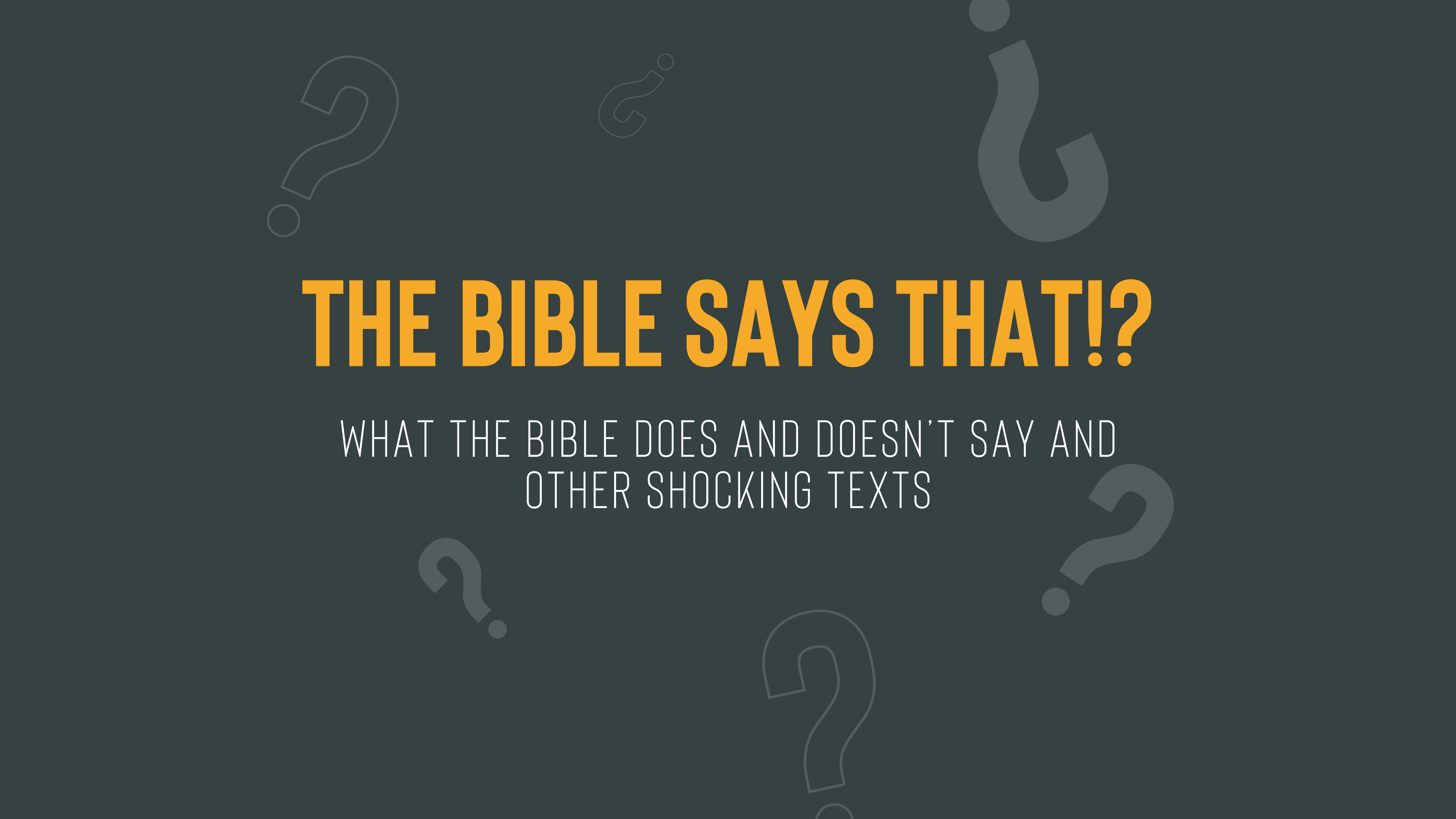The Bible Says That!? - Who Wrote The Torah? Pt. 7

Click play below to listen as you read along
Click Download to check out today's handout
Recap
Last week, we talked about how the four different sources, JEDP, correlated to different regions and time periods in Israel’s history. Today, we’re going to look at how all of these blocks of evidence that we’ve been talking about for the past several weeks all converge into one cohesive unit.
Today we’ll talk about specific case studies and give you more examples, some of which I’ve mentioned above with these doublets and break down piece by piece what these look like. We’ve already done this once with the story of Joseph, but we’ll do that again with another few examples and also see how this actually happens in our New Testaments as well.
Again, the following is pulled from my class notes as well as the book The Bible With Sources Revealed by Dr. Friedman.
Convergence of Evidence
I am going to summarize Friedman's description of this final block of evidence as best as I can. If you want to read it directly, check out The Bible with Sources Revealed by Friedman.
The strongest evidence for this theory is the fact that there are so many different and independent blocks of evidence that support this theory. Unique Linguistic styles for each source, Unique terminology only used by each source, internal consistency within each source, Narrative continuity flowing smoothly when each source is separated from the whole, Connections with other texts between JEDP and other books of the Bible, and the relationship between JEDP with specific historical time frames. All of these blocks of evidence on their own, could give some support to this theory. However, combined together, all of these blocks of evidence provide an overwhelming case for the reliability and authenticity for this theory. For example
There are over 30 different instances of doublets (the same story told more than once from two different sources) that are repeated throughout Torah. Sometimes they are extremely similar, other times they have differences in the details. The fact that so many different doublets exist in and of itself is significant. However, their existence is not strong enough evidence.
We could also say that there are hundreds of apparent contradictions and we could go one by one and try to explain away these hundreds of contradictions. But that is not only impractical, but would often lead to a lot of "well it could be this... or it could be that..." and we end up just explaining away everything. Trying to explain everything away is not a great show of confidence in something and often shows that one's argument isn't backed with evidence, strong, or convincing.
We could also go case by case and talk about each instance where the name of God differs from text to text.
None of these individual pieces of evidence together that we’ve been talking about the past few weeks, on their own, make for a strong argument for this theory. Instead, it is the fact that all of these individual blocks of evidence converge with one another.
When you separate the doublets from each other, this resolves nearly every single apparent contradiction. When you separate the doublets, the name of God consistently divides among the sources in all but exactly 3 instances out of 2000 references!
When you separate the doublets, terminology remains pristinely consistent within each source. I’ve only mentioned a handful, but there are over 400 other occurrences. When you separate the doublets, you get narrative flows that are consistent with only the occasional rare break.
According to Friedman, “The most compelling argument for the hypothesis is that this hypothesis best accounts for the fact that all this evidence of so many kinds comes together so consistently. To this day, no one… has ever addressed this fact.” (Friedman, 28).
So let's check out today's handout and try to determine for ourselves if/how we can figure out which Bible passage belongs to which author.
Follow along as the class goes over the worksheet on Gen 1 and 2
Given all of this evidence, there is no way that a scholar could just be making all of this up. To have everything line up so consistently is not something that we can just cleverly invent. No matter how smart I was, there’s no way that I could just separate everything out so precisely. The best argument is that there were separate authors that God was working through and writing through to bring us this text.
Next week, we're going to cover a few more examples of literary doubles as well as how this relates to the New Testament and how it was composed.
